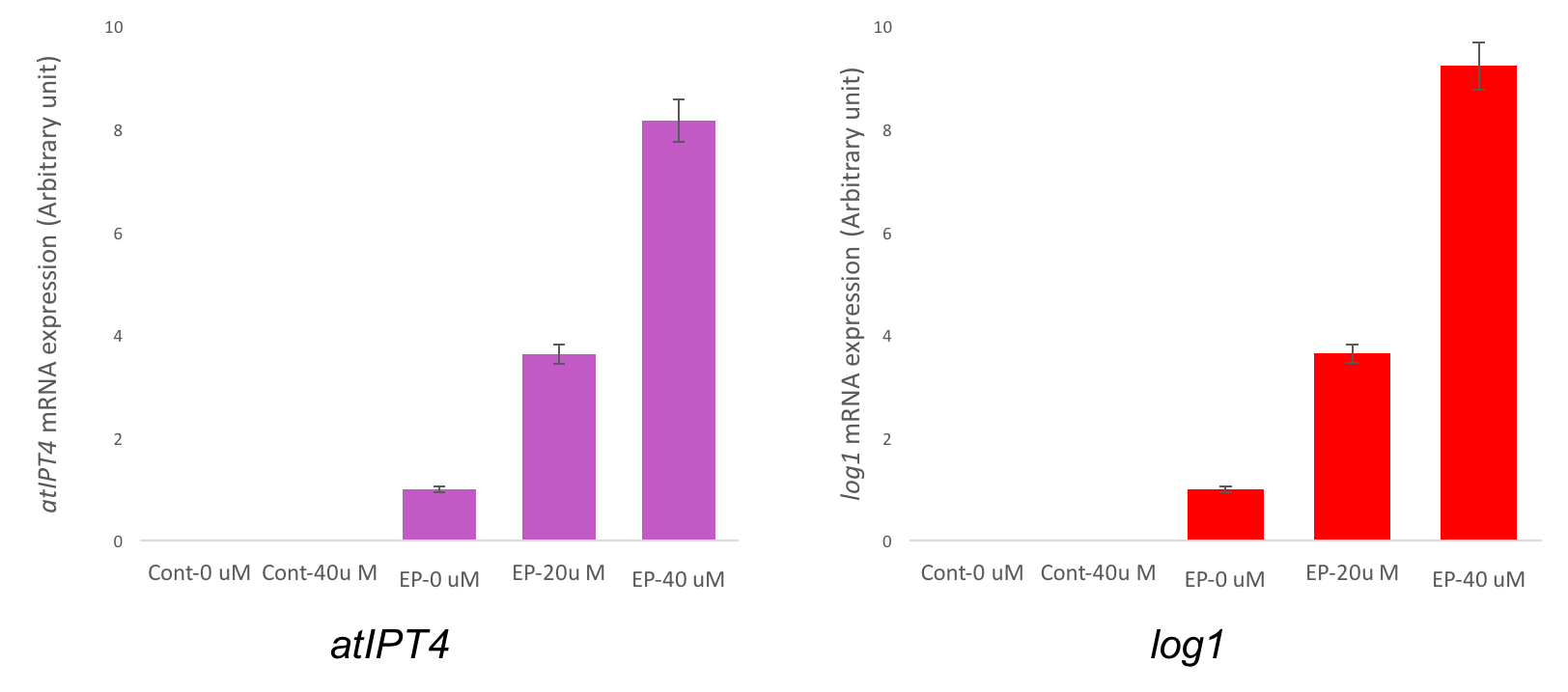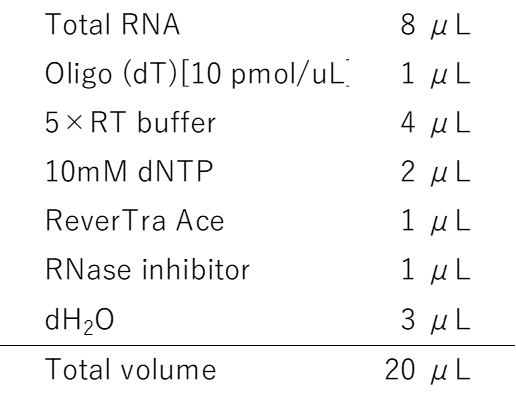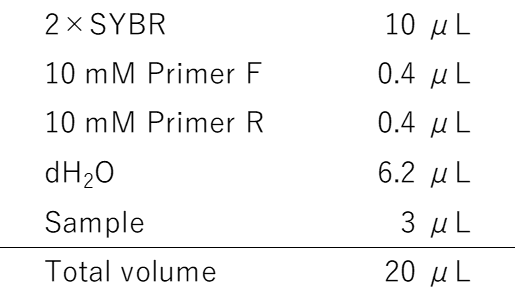Difference between revisions of "Part:BBa K2505005"
| Line 120: | Line 120: | ||
==Reference== | ==Reference== | ||
Kakimoto, T. (2001) Identification of plant cytokinin biosynthetic enzymes as dimethylallyl diphosphate:ATP/ADP isopentenyltransferases. Plant Cell Physiol. 42:677-85. | Kakimoto, T. (2001) Identification of plant cytokinin biosynthetic enzymes as dimethylallyl diphosphate:ATP/ADP isopentenyltransferases. Plant Cell Physiol. 42:677-85. | ||
| + | |||
| + | Kurakawa, T., Ueda, N., Maekawa, M., Kobayashi, K., Kojima, M., Nagato, Y., ... Kyozuka, J. (2007). Direct control of shoot meristem activity by a cytokinin-activating enzyme. Nature, 445(7128), 652-655. DOI: | ||
Suzuki, T., Miwa, K., Ishikawa, K., Yamada, H., Aiba, H. and Mizuno, T. (2001) The Arabidopsis Sensor His-kinase, AHK4, Can Respond to Cytokinins. Plant Cell Physiol. 42: 107-113. | Suzuki, T., Miwa, K., Ishikawa, K., Yamada, H., Aiba, H. and Mizuno, T. (2001) The Arabidopsis Sensor His-kinase, AHK4, Can Respond to Cytokinins. Plant Cell Physiol. 42: 107-113. | ||
Latest revision as of 18:27, 1 November 2017
(tra box)7-CMVmin-atipt4-IVS-IRES-log1-polyA
Sequence and Features
- 10COMPATIBLE WITH RFC[10]
- 12INCOMPATIBLE WITH RFC[12]Illegal NheI site found at 1442
- 21INCOMPATIBLE WITH RFC[21]Illegal BglII site found at 26
Illegal BglII site found at 72
Illegal BglII site found at 118
Illegal BglII site found at 164
Illegal BglII site found at 210
Illegal BglII site found at 256
Illegal BglII site found at 302
Illegal BamHI site found at 476
Illegal XhoI site found at 2728
Illegal XhoI site found at 2740 - 23COMPATIBLE WITH RFC[23]
- 25INCOMPATIBLE WITH RFC[25]Illegal NgoMIV site found at 1220
- 1000INCOMPATIBLE WITH RFC[1000]Illegal BsaI site found at 1362
tra box : Mammalian Tra-R inducible element BBa_K553021
These two genes(atipt4 and log1) are derived from Arabidopsis thaliana and encode enzymes necessary for synthesizing iP (isopentenyladenine) in mammalian cells. iP is a kind of cytokinins that are signaling molecules (Phytohormones) in plants and play important roles in cell growth and differentiation. When these genes are introduced to human cells, EA.hy926, the cells produce iP heterologously. AtIPT4 has the adenylate dimethylallyltransferase ([http://www.genome.jp/dbget-bin/www_bget?ec:2.5.1.112 [EC:2.5.1.112] ]: cytokinin synthase) activity and catalyzes the transfer of an isopentenyl group from dimethylallyl diphosphate (DMAPP) to ATP and ADP, producing cytokinin nucleotides(Kakimoto et al.2001). ). Note that cytokinin nucleotides are the immature form. LOG1 has the phosphoribohydrolase activity and converts inactive cytokinin nucleotides to the biologically active free-base forms. .
The expression of these genes are induced by a chemeric transcription factor which consist of eukaryotic activation domain of NF-κB p65 and prokaryotic transcription factor, TraR. The DNA binding domain of TraR binds to tra box in the presence of 3OC8AHL molecules and then CMV minimal promoter will be activated by the activation domain of NF-κB p65 (Neddermann et al. 2003).
IVS (intervining sequence) is one kind of introns and is important for increasing the mRNA stability in eukaryotic cells. IRES (internal ribosome entry site) is an RNA element that allows translation initiation in a cap-independent mannerThe term “polyA” indicates the polyadenylation signal that is important for the nuclear export, translation, and stability of mRNA.
The DNA sequences of these genes(atipt4 and log1) are optimized for expressing in human cells considering the codon usage.
Contents
Characterization
In this assay, we investigated whether human cells (the EA.hy926 cell line) receive AHL, a signaling molecule that is synthesized in and exported from E. coli and induce the transcription of atIPT4 and log1 genes to synthesize iP.
AHLs, which stand for [N-]acyl-homoserine lactones, are small signaling molecules and are employed in the bacterial “Quorum Sensing”. Among several kinds of AHLs, 3OC8HSL (C8) was chosen in the assay.
In order to achieve C8-dependent transcription in human cells, a chimeric transcription factor named RelA/NLS/traR was constructed. This protein is comprised of the transcription activating domain of RelA (a kind of human NF-kB family), nuclear localization signal (NLS), and full-length traR. This protein can bind to an appropriate enhancer sequence to activate transcription only in the presence of C8 (see below for details).
Isopentenyladenine (iP) is kind of a cytokinin, and we use it as a signal molecule from human to E. coli cells and for the inter-kingdom communication. Cytokinins are the signaling molecules (or Phytohormones) that plants produce and play important roles in cell growth and differentiation. In the case of Arabidopsis thaliana, extracellular iP is received by a transmembrane receptor, AHK4.
AHK4 has a histidine kinase activity, and binding of iP to AHK4 triggers auto-phosphorylation of AHK4 and the following histidine-to-aspartate phosphorelay. As a consequence, transcription from target genes is induced and/or repressed so that physiological states of plants are changed. Surprisingly, the histidine kinase activity of AHK4 has shown to be activated depending on iP even in E. coli cells (Suzuki et al. 2001, Lukáš Spíchal et al. 2004). This fact encouraged us to use iP as a signaling molecule in our project (See the AHK4 assay page).
Result
The transformed cells were treated or not treated with different concentrations of C8. Then, the mRNA level of atIPT4 and log1 was analyzed using quantitative RT-PCR. As shown in Figure 1, the CMV minimal promoter was activated following the addition of C8.
Discussion
We confirmed that the transcription of atIPT4 and log1) genes were induced by C8 addition and the degree of induction depends on C8 concentration.
Material and Method
Plasmids
- Sample
pCAG-relA/NLS/traR-polyA (pMC1neo-polyA)
(trabox)7-CMVmin-atIPT4-IVS-IRES-log1-polyA(pIRESneo3)
Construction
- Cell line
All the plasmids were prepared in Homo sapiens EA.hy926 cell line.
Medium
- DMEM 10% FBS
- DMEM 10% FBS G418 (400 μg/mL)
The primers for quantitative RT-PCR
- atIPT4
Forward: 5’- gtgcaacgacaaaatggtgg-3’ Reverse: 3’-cctgaagatcacgaccaatcg-5’
- log1
Forward: 5’-ggactgatctctcaggctgtg-3’ Reverse: 3’-cggtagcagatatgcatcagc-5’
Protocol
1. The EA.hy 926 cells were cultured to about 1.0 * 107 cells/dish (the dish size is 10 cm in diameter) and used for electroporation.
2. C8 was added to the dish at final concentration of 0, 20, or 40 μM and incubated further for 24 hours.
3. After harvesting the cells, total RNAs were purified according to the ordinary AGPC (Acid guanidinium thiocyanate-phenol-chloroform) method, and cDNAs were obtained by reverse transcription(Table. 1).
4. qPCR was performed using the above cDNA(Table. 2).
AGPC methods
①Vortex the collected cells in the tube for 10 to 15 sec.
②Add 1/10 volume of Na acetate.
③Add 1.4-times volume of Phenol/Chloroform/Isoamyl alcohol.
④Vortex every 10 minutes.
⑤Centrifuge at 15000 rpm, 10 min, 4 ° C.
⑥Recover the aqueous layer and mix with 400 uL isopropanol.
⑦Leave at -20 ° C for 1 hour.
⑧Centrifuge at 15000 rpm, 10 min, 4 ° C and remove supernatant.
⑨Add 400 uL of 75% ethanol, centrifuge at 15000 rpm, 10 min, 4 ° C and remove supernatant.
⑩Dry the pellet and dissolve with 10 uL of pH = 7.4 TE buffer
Reference
Kakimoto, T. (2001) Identification of plant cytokinin biosynthetic enzymes as dimethylallyl diphosphate:ATP/ADP isopentenyltransferases. Plant Cell Physiol. 42:677-85.
Kurakawa, T., Ueda, N., Maekawa, M., Kobayashi, K., Kojima, M., Nagato, Y., ... Kyozuka, J. (2007). Direct control of shoot meristem activity by a cytokinin-activating enzyme. Nature, 445(7128), 652-655. DOI:
Suzuki, T., Miwa, K., Ishikawa, K., Yamada, H., Aiba, H. and Mizuno, T. (2001) The Arabidopsis Sensor His-kinase, AHK4, Can Respond to Cytokinins. Plant Cell Physiol. 42: 107-113.
Spíchal, L., Rakova, N.Y., Riefler, M., Mizuno, T., Romanov, G.A.,Strnad, M. and Schmülling, T. (2004) Two Cytokinin Receptors of Arabidopsis thaliana, CRE1/AHK4 and AHK3, Differ in their Ligand Specifity in a Bacterial Assay. Plant Cell Physiol. 45: 1299-1305.
Petra Neddermann, Cesare Gargioli, Ester Muraglia, Sania Sambuncini, Fabio Bonelli, Raffaele De Francesco, Riccardo cortese (2003) A novel, inducible, eukaryotic gene expression system based on the quorum-sensing transcription facter TraR. EMBO reports VOL 4: 159-165.



